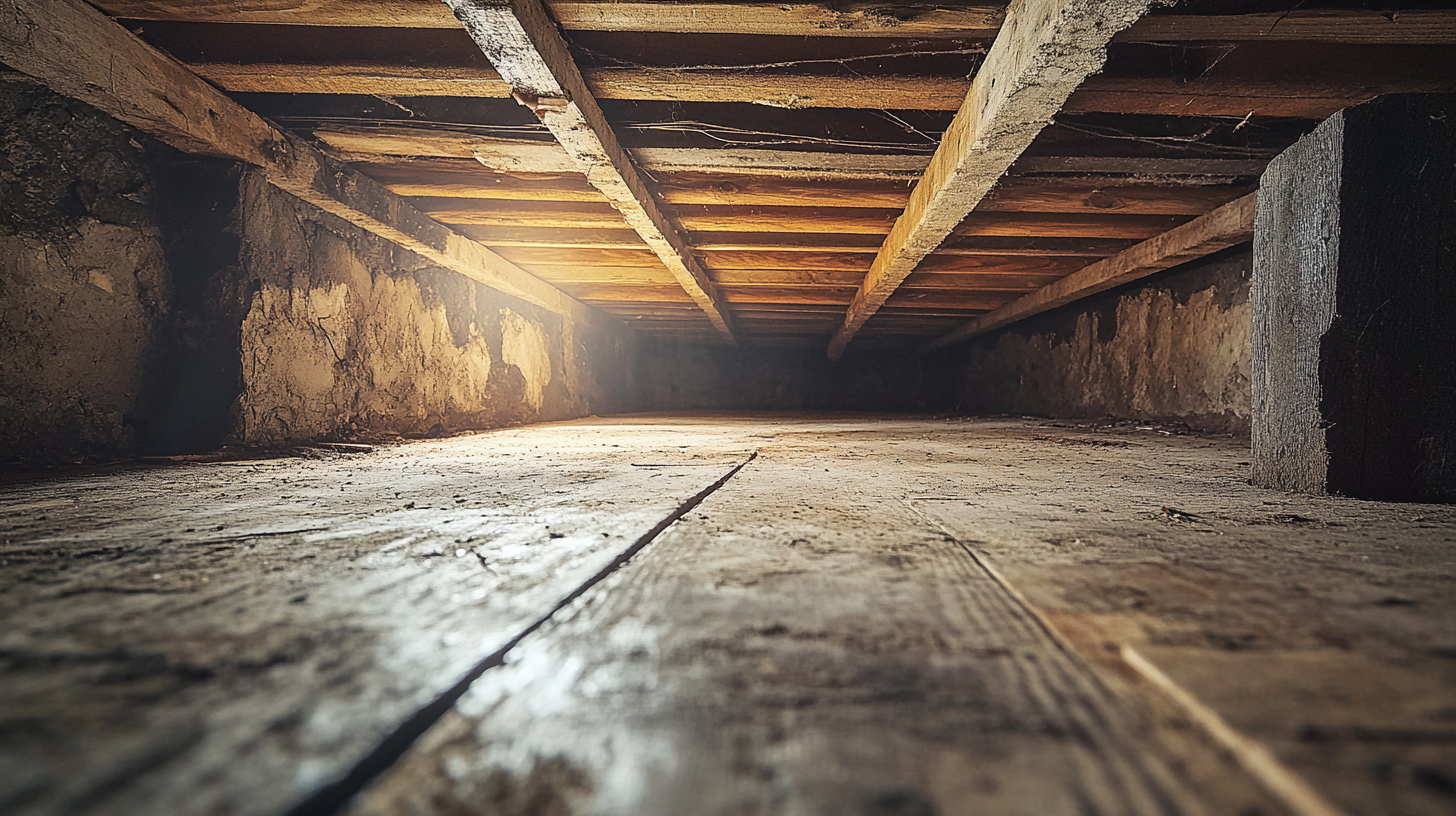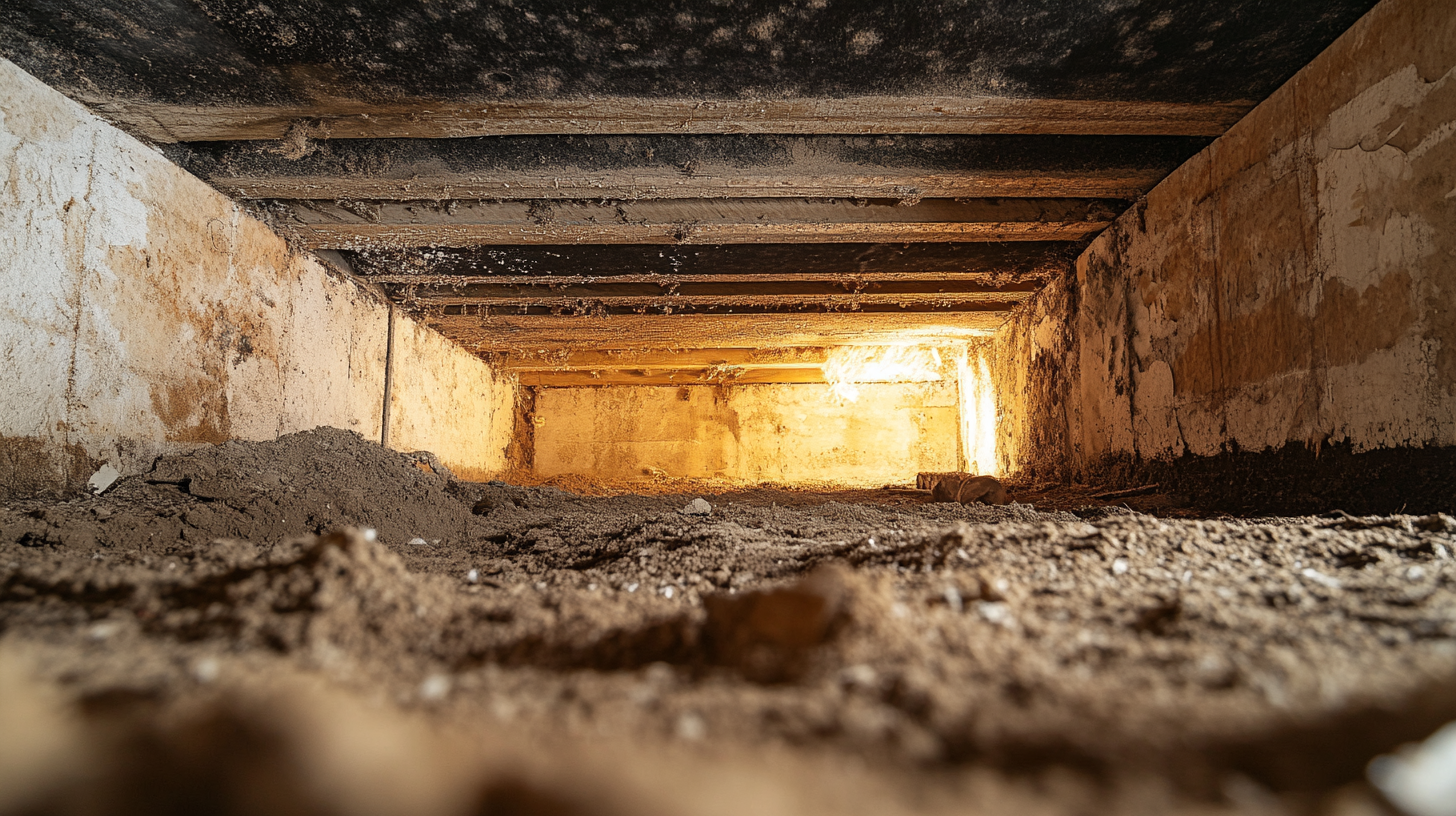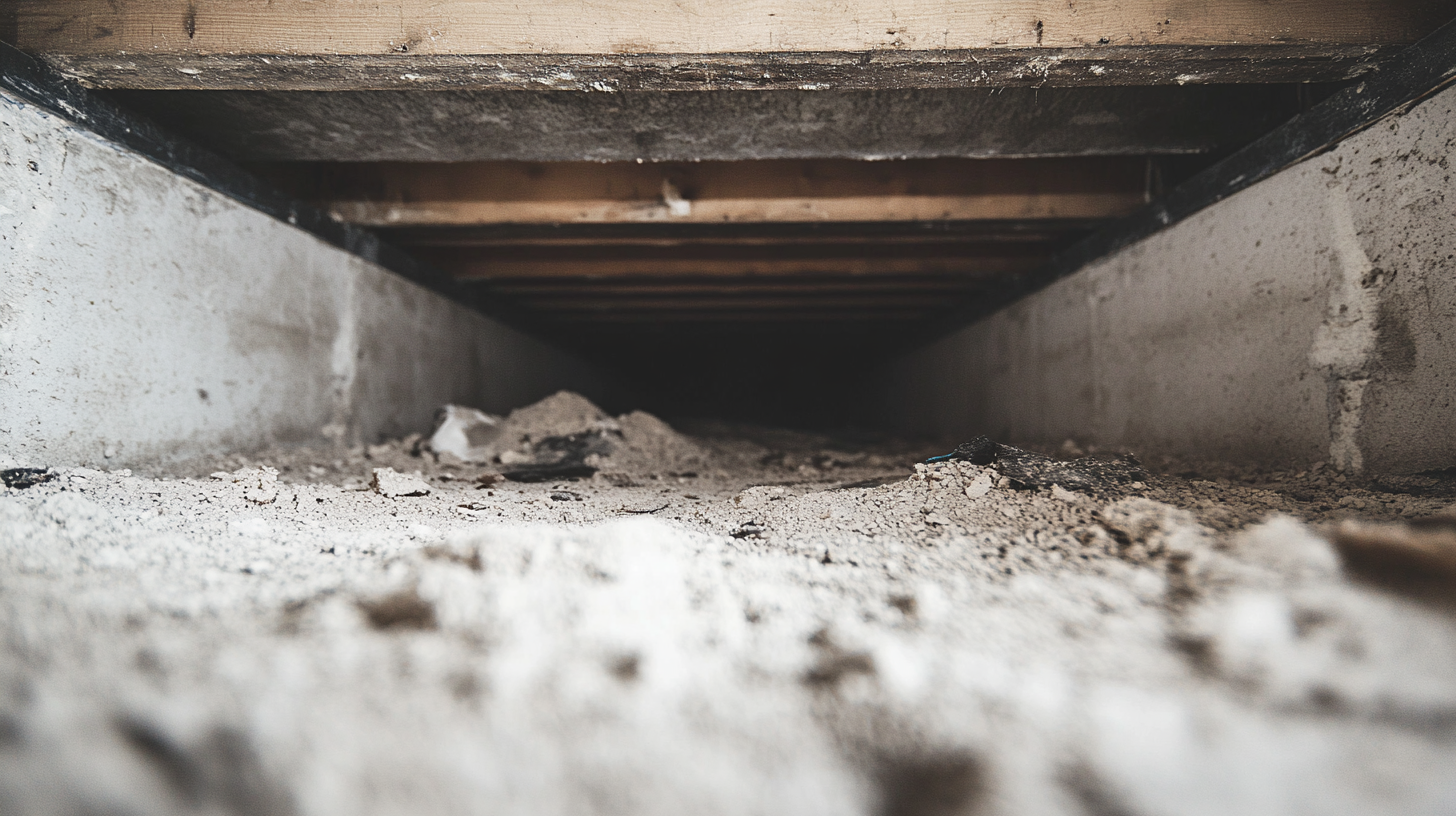Cleaning HVAC Systems After Smoke Damage

In the aftermath of smoke damage, whether from a household fire, industrial incident, or even a minor kitchen mishap, the focus often turns to visible repairs and cleaning. However, one crucial aspect that demands equal, if not more, attention is the cleaning of HVAC (Heating, Ventilation, and Air Conditioning) systems. This blog aims to underscore the importance of thoroughly cleaning HVAC systems following smoke damage, delving into how smoke can affect these systems and the potential risks of neglecting proper cleaning.
Smoke, composed of a complex mixture of gases, particles, and chemicals, can insidiously infiltrate HVAC systems, leading to a range of problems. When a building suffers smoke damage, these contaminants can become trapped in the ductwork, filters, and mechanical components of the HVAC system. Over time, if not properly addressed, the lingering presence of these smoke residues can not only impair the system's efficiency but also pose significant health risks to occupants through continuous recirculation of polluted air.
The risks of not cleaning HVAC systems after smoke damage extend beyond immediate concerns. There's the potential for long-term air quality issues, increased wear and tear on the system, and heightened energy consumption due to reduced efficiency. Moreover, the continuous circulation of smoke-contaminated air can exacerbate respiratory issues and contribute to a persistent, unpleasant odor that serves as a constant reminder of the incident.
In this blog, we will explore the intricacies of how smoke affects HVAC systems, the importance of timely and thorough cleaning, and the potential consequences of neglect. Our goal is to provide insights into the best practices for HVAC cleaning post-smoke damage, emphasizing the role of such maintenance in ensuring a safe, healthy, and comfortable indoor environment.
Join us as we navigate the often-overlooked yet crucial aspect of post-smoke damage recovery, highlighting the need for meticulous attention to HVAC systems to fully restore air quality and peace of mind.
Understanding Smoke Damage in HVAC Systems
Smoke damage in HVAC (Heating, Ventilation, and Air Conditioning) systems is a critical issue that can have lasting impacts on both the system's functionality and the health of building occupants. This section provides a detailed explanation of how smoke affects HVAC systems and discusses the potential risks of ignoring smoke damage.
How Smoke Affects HVAC Systems
Smoke can significantly impact HVAC systems, compromising their efficiency and the quality of air they circulate. Here’s a detailed look at this impact:
Detailed Explanation of the Impact of Smoke Particles and Residues on HVAC Components:
- Clogging and Contamination: Smoke particles can clog filters and coat internal components, such as coils and ducts, reducing airflow and system efficiency.
- Corrosive Effects: Certain chemicals in smoke, like acidic soot, can corrode metal parts of the HVAC system, leading to premature wear and potential breakdowns.
- Odor Absorption: HVAC systems can absorb smoke odors, which then get recirculated throughout the building, leading to persistent unpleasant smells.
- Electrical and Control Damage: Smoke can also affect electrical components and controls within the system, potentially causing malfunctions or failures.
Risks of Ignoring Smoke Damage in HVAC Systems
Failing to address smoke damage in HVAC systems can lead to several risks, affecting both health and system performance. Here’s a discussion on these risks:
Discussion on Potential Health Risks and System Efficiency Issues:
- Health Risks: Continuous circulation of smoke-contaminated air can exacerbate respiratory problems, trigger allergies, and pose long-term health risks to occupants.
- Reduced Air Quality: Ignoring smoke damage compromises the air quality, as contaminants and odors continue to circulate.
- Decreased System Efficiency: Clogged and contaminated HVAC components work less efficiently, increasing energy costs and potentially leading to more frequent repairs or replacements.
- Long-Term System Damage: Prolonged exposure to smoke residues can shorten the lifespan of the HVAC system due to increased wear and tear on its components.
Understanding the effects of smoke damage on HVAC systems and the importance of timely intervention is crucial. It ensures not only the efficient operation of the HVAC system but also the health and comfort of those who rely on it for clean and safe indoor air.
Initial Assessment and Safety Precautions
Before embarking on the process of cleaning and restoring areas affected by smoke damage, it's crucial to conduct an initial assessment and adhere to safety precautions. This section emphasizes the importance of professional evaluations for accurate damage assessment and outlines essential safety protocols and gear recommendations before starting the cleaning process.
Professional Assessment of Damage
A thorough and accurate assessment of smoke damage is a critical first step in the restoration process. Here’s why professional evaluation is essential:
- The Importance of Getting a Professional Evaluation for Accurate Damage Assessment:
- Expertise in Damage Identification: Professionals have the expertise to identify both visible and hidden damage caused by smoke, including structural weaknesses and potential health hazards.
- Detailed and Comprehensive Assessment: A professional assessment provides a comprehensive overview of the extent of damage, which is crucial for planning the restoration process effectively.
- Insurance Documentation: Professional evaluations are often required for insurance claims, providing detailed and accurate documentation of the damage.
- Safety Assessment: Professionals can identify safety risks, such as compromised structural integrity or electrical hazards, ensuring that the cleaning process is conducted safely.
Safety Measures Before Cleaning
Before starting the cleaning process, it's important to follow specific safety protocols and use appropriate protective gear. Here are some recommendations:
Safety Protocols to Follow Before Starting the Cleaning Process:
- Ensure Structural Safety: Check the structural integrity of the affected area, especially after a fire, to ensure it's safe to enter.
- Turn Off Electricity: If there is any electrical damage, turn off the power to the area to prevent electrical hazards.
- Ventilate the Area: Proper ventilation is crucial to disperse smoke particles and fumes from cleaning agents.
Equipment and Protective Gear Recommendations:
- Respirators or Masks: Use N95 respirators or masks to protect against inhaling soot and other particles.
- Protective Clothing: Wear long sleeves, pants, and gloves to protect your skin from soot and cleaning chemicals.
- Goggles: Use safety goggles to protect your eyes from airborne particles and cleaning sprays.
- Sturdy Footwear: Wear closed-toe, sturdy shoes to protect your feet from sharp objects and debris.
Adhering to these safety measures and utilizing the right equipment are key steps in preparing for the smoke damage cleaning process. They ensure not only the effectiveness of the cleanup but also the safety of those involved.
Step-by-Step Cleaning Process
Cleaning HVAC systems after smoke damage is a meticulous process that involves thorough cleaning of ductwork and servicing of key components. This section provides a step-by-step guide on these processes, detailing techniques, tools, and cleaning agents for duct cleaning, as well as instructions for servicing essential HVAC components.
Cleaning the Ductwork
The ductwork of an HVAC system can harbor smoke residues and odors, making its cleaning a critical part of the restoration process. Here’s how to approach it:
Techniques for Cleaning Ducts and Removing Smoke Residues:
- Inspection and Assessment: Begin with a thorough inspection of the ductwork to identify areas with significant soot or residue buildup.
- Vacuuming with HEPA Filters: Use a vacuum with a HEPA filter to remove loose particles without spreading them through the air.
- Manual Cleaning: For areas with heavier residue, manually clean the ducts using brushes and cleaning agents specifically designed for ductwork.
Tools and Cleaning Agents Recommended for Duct Cleaning:
- Duct Cleaning Brushes: Brushes with soft bristles are effective for loosening soot and debris.
- HEPA Vacuum: Essential for capturing fine particulate matter during cleaning.
- Duct Cleaning Solutions: Use solutions formulated for HVAC systems that can break down soot and smoke residues without damaging the ducts.
- H3: Servicing HVAC Components
Servicing key components of the HVAC system is crucial to ensure its proper functioning after smoke damage. Here’s a detailed guide:
Detailed Guide on Cleaning and Servicing Key HVAC Components:
- Filters: Replace all air filters as they can be clogged with soot and smoke particles. This is crucial for maintaining air quality.
- Coils: Clean the evaporator and condenser coils using a coil cleaner. Ensure that the cleaner is suitable for the type of coil being cleaned.
- Blowers: Remove the blower unit and clean it thoroughly. Pay special attention to the blower wheel and motor.
- Check and Test: After cleaning and servicing, test the system to ensure it operates correctly. Listen for unusual noises and monitor for any unusual smells that might indicate residual contamination.
Following these steps for cleaning ductwork and servicing HVAC components can significantly improve the air quality and efficiency of the system after smoke damage. It's a crucial part of restoring a safe and healthy environment in any building affected by smoke.
Addressing Smoke Odor in HVAC Systems
Eliminating smoke odor from HVAC systems is a crucial aspect of restoring air quality after smoke damage. Persistent odors not only affect the comfort of a building's occupants but can also serve as an unpleasant reminder of the incident. This section covers effective methods for odor removal within the HVAC system and provides tips for maintaining a fresh-smelling system.
Techniques for Odor Removal
Removing smoke odor from an HVAC system requires a combination of thorough cleaning and the use of specific products designed to neutralize odors. Here are some effective methods:
Methods for Eliminating Smoke Odor Within the HVAC System:
- Thorough Cleaning: Start with a comprehensive cleaning of all components, including ducts, filters, coils, and blowers, to remove soot and residue.
- Air Duct Sealing: Seal any leaks in the air ducts to prevent odors from recurring and to improve the efficiency of the system.
Use of Deodorizers and Air Purifiers:
- HVAC-Safe Deodorizers: Use deodorizers that are safe for HVAC systems. These can be applied directly into the system to neutralize odors.
- Activated Carbon Filters: Install activated carbon filters in the HVAC system. These filters are highly effective at absorbing smoke odors.
- Ozone Generators: In cases of severe odor, consider using an ozone generator. However, this should be done by professionals, as ozone can be harmful if not used correctly.
Preventing Recurrence of Odors
Maintaining a smoke-free and fresh-smelling HVAC system is key to ensuring long-term air quality. Here are some tips:
Tips for Maintaining a Smoke-Free and Fresh-Smelling HVAC System:
- Regular Maintenance: Regularly replace filters and schedule routine maintenance checks to keep the system clean and functioning efficiently.
- Smoke-Free Environment: Enforce a strict no-smoking policy in and around the building to prevent smoke odors from entering the system.
- Humidity Control: Maintain appropriate humidity levels in the building. High humidity can amplify odors and contribute to the growth of mold and mildew, which can also cause unpleasant smells.
- Air Fresheners: Consider using HVAC-compatible air fresheners for a pleasant scent. Ensure these are safe for use in your specific system.
By implementing these techniques for odor removal and taking steps to prevent the recurrence of odors, you can ensure that your HVAC system not only functions efficiently but also contributes to a clean and pleasant indoor environment.
When to Seek Professional HVAC Cleaning Services
After a smoke damage incident, one of the critical decisions is determining whether to clean the HVAC system yourself or to seek professional services. This section provides guidelines on when to call in professional HVAC cleaning services and introduces what to expect from these services, including the benefits of expert cleaning.
Evaluating the Need for Professional Help
Knowing when to seek professional HVAC cleaning services is crucial for ensuring the system's integrity and the indoor air quality. Here are some guidelines:
Guidelines on When to Call in Professional HVAC Cleaning Services:
- Extent of Smoke Damage: If the smoke damage is extensive or if there is visible soot and ash in the ductwork, professional cleaning is recommended.
- Odor Persistence: If smoke odors persist despite initial cleaning efforts, professionals can employ more advanced techniques to eliminate these odors.
- Health Concerns: If there are concerns about air quality affecting health, especially for individuals with respiratory issues, professional cleaning can ensure thorough removal of contaminants.
- Complex Systems: For HVAC systems that are complex or hard to access, professional services have the necessary equipment and expertise to handle the cleaning effectively.
What to Expect from Professional Services
Professional HVAC cleaning services offer specialized expertise and equipment to thoroughly clean and restore the system. Here’s an introduction to these services:
Introduction of the Services Provided by Professionals and the Benefits of Expert Cleaning:
- Comprehensive Cleaning: Professionals perform a thorough cleaning of all parts of the HVAC system, including ducts, coils, and filters.
- Advanced Techniques: They use advanced techniques like air washing, brushing, and vacuuming with HEPA filters to ensure a deep clean.
- Odor Elimination: Professional services often include odor elimination techniques such as ozone treatment or thermal fogging, which are more effective than standard cleaning methods.
- System Inspection and Repair: In addition to cleaning, professionals can inspect the system for any damage caused by smoke and perform necessary repairs.
- Improved Air Quality: Professional cleaning can significantly improve indoor air quality, reducing potential health risks associated with smoke and soot particles.
- Peace of Mind: Knowing that your HVAC system has been professionally cleaned and inspected provides peace of mind regarding its safety and efficiency.
Seeking professional HVAC cleaning services after smoke damage ensures that the system is thoroughly cleaned and functioning properly, providing a safe and healthy environment for building occupants.
FAQs
Contact Fast Response Cleaning & Restoration Today!
Fast Response Cleaning & Restoration will do everything we can to ensure your experience with us is excellent.
Request A FREE Estimate
Request A FREE Estimate Form
CHECKOUT RECENT POST



Have an Emergency? We're Here to Help!
When it comes to disaster cleanup, we are a seasoned veteran in the industry and have helped hundreds of property owners just like you.
Our disaster recovery teams are available 24-7 to quickly clean up and repair disasters of all types.
